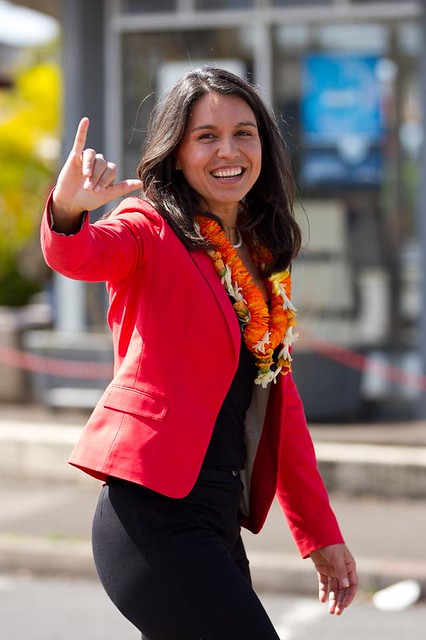After the
1968 Democratic National Convention, at which pro-
Vietnam war liberal
Hubert Humphrey was nominated for the presidency despite not running in a single
primary election, the Democratic Party made changes in its delegate selection process to correct what was seen as "illusory" control of the nomination process by primary voters.
[7] A commission headed by
South Dakota Senator
George McGovern and
Minnesota Representative
Donald M. Fraser met in 1969 and 1970 to make the composition of the Democratic Party's nominating convention less subject to control by party leaders and more responsive to the votes cast in primary elections.
The rules implemented by the
McGovern-Fraser Commission shifted the balance of power to primary elections and caucuses, mandating that all delegates be chosen via mechanisms open to all party members.
[7] As a result of this change the number of primaries more than doubled over the next three presidential election cycles, from 17 in 1968 to 35 in 1980.
[7] Despite the radically increased level of primary participation, with 32 million voters taking part in the selection process by 1980, the Democrats proved largely unsuccessful at the ballot box, with the 1972 presidential campaign of McGovern and the 1980 re-election campaign of
Jimmy Carter resulting in landslide defeats.
[7] Democratic Party affiliation skidded from 41 percent of the electorate at the time of the McGovern-Fraser Commission report to just 31 percent in the aftermath of the 1980 electoral debacle.
[7]
Further soul-searching took place among party leaders, who argued that the pendulum had swung too far in the direction of primary elections over insider decision-making, with one May 1981 California white paper declaring that the Democratic Party had "lost its leadership, collective vision and ties with the past," resulting in the nomination of unelectable candidates.
[8] A new 70-member commission headed by
Governor of North Carolina Jim Hunt was appointed to further refine the Democratic Party's nomination process, attempting to balance the wishes of rank-and-file Democrats with the collective wisdom of party leaders and to thereby avoid the nomination of insurgent candidates exemplified by the liberal McGovern or the anti-Washington conservative Carter and lessening the potential influence of single-issue politics in the selection process.
[8]
Following a series of meetings held from August 1981 to February 1982, the Hunt Commission issued a report which recommended the set aside of unelected and unpledged delegate slots for Democratic members of Congress and for state party chairs and vice chairs (so-called "superdelegates").
[8] With the original Hunt plan, superdelegates were to represent 30% of all delegates to the national convention, but when it was finally implemented by the
Democratic National Committee for the 1984 election, the number of superdelegates was set 14%. Over time this percentage has gradually increased, until by 2008 the percentage stands at approximately 20% of total delegates to the Democratic Party nominating convention.
[9]
Depending on who is in the oval office, I doubt very seriously a Trump Administration would challenge Jim Crow era voting tactics. But a President Clinton most certainly will.

 I'm choppin these Black Democratic Klansmen down one by one
I'm choppin these Black Democratic Klansmen down one by one 









